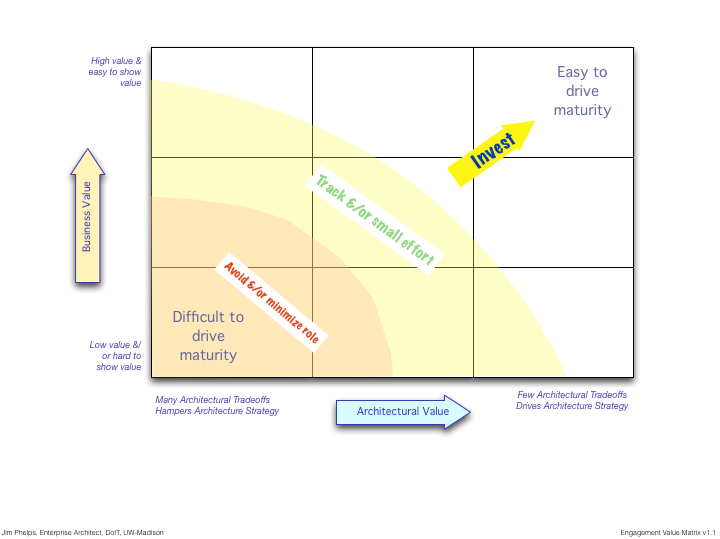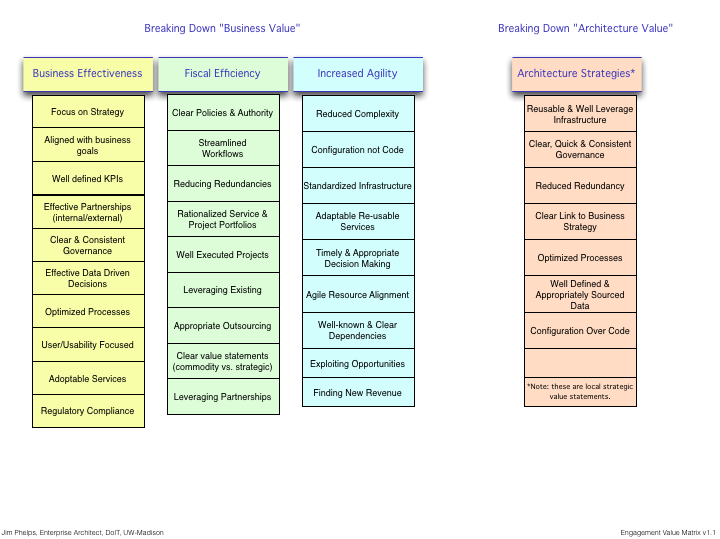This is an Engagement Value matrix developed at UW-Madison in collaboration with the ITANA membership. The Value Matrix and Value Measures are shown below. A rolled-up PDF is attached.
There are several uses for this matrix at UW-Madison:
(1) It provides a way to evaluate the various projects and engagements that architecture are involved in. We can use the matrix to evaluate which engagements are most impactful and focus our time and effort on those limiting our time and effort in the low-value engagements.
(2) We can map an individual engagement to the various value metrics listed under both the "Business Value" and "Architectural Value" areas. This gives us a way to talk to the campus about the importance of the engagement.
e.g. Our SOA Infrastructure (we call Application Integration Architecture) Service helps support:
Business Effectiveness through Clear and Consistent Governance, Effective Data-Driven Decisions, Optimized Processes, User/Usability Focused, Regulatory Compliance
Fiscal Efficiency through Clear Policies & Authority, Streamlined Workflows, Reducing Redundancies, Leveraging Existing
Increased Agility through Reduced Complexity, Configuration not Code, Standardized Infrastructure, Adaptable Re-usable Services, Well-known & Clear Dependencies
Architecture Strategies though Reusable & Well Leverage Infrastructure, Clear, Quick & Consistent Governance, Reduced Redundancy, Optimized Processes, Well Defined & Appropriately Sourced Data, Configuration Over Code
(3) Finally, we can map out different outcomes for a given initiative and walk through various scenarios showing how it could be more impactful based on different decisions. For example, Our Office365 Initiative might be in the "Difficult to Drive Maturity" area if we do not eliminate all of the redundant email and calendar services that are on campus, move to a common calendar solution, change process and fully leverage the system. It might move into the "Track &/or Small Effort" area if all we do is eliminate the email services on campus but don't really leverage a common calendar and the collaboration tools of the suite. Finally we could move it to "Easy to Drive Maturity" if we eliminated the email and calendars services, moved to common calendaring, leverage the suite fully.
If you use this tool or if it inspires you to create a tool for use on your campus, please share your experience and your ideas and outcomes with ITANA.


